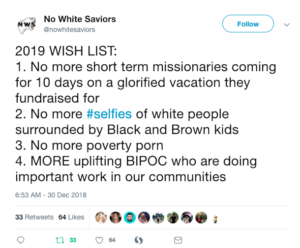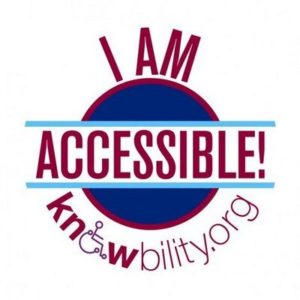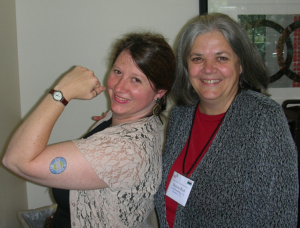 Attention nonprofits: stop believing that you automatically have some kind of magical, wonderful reputation because you “do good.”
Attention nonprofits: stop believing that you automatically have some kind of magical, wonderful reputation because you “do good.”
Your organization’s future over the next four years depends on your organization rapidly becoming a much, much better advocate for its work as well as the work of the entire mission-based sector.
Over the next four years (and beyond):
Please dramatically improve how you communicate why your organization is necessary. Define it well, and say it repeatedly, in a variety of ways – in press releases, on your web site, in every speech you make, on your Facebook page, etc. Ask the spouses and partners of people that work and volunteer for your organization, people who have NOT volunteered or worked there themselves, to come in for coffee and donuts and a short discussion – and ask them why your organization exists, why it is necessary. Be prepared for them to have no specifics, just a possible, general idea. Use their feedback to create a plan to improve your communications, internally and externally, and to make sure it is clear to anyone and everyone why your organization is necessary. Make it a priority for the next four years to constantly and dramatically improve communication about what your organization does and WHY it exists.
Please dramatically improve how you communicate as to why there is poverty, or domestic violence, or homelessness, or unemployment, or a need for live theater, or whatever it is your nonprofit is concerned with addressing. Please don’t just ask for help for an issue without explicitly saying why the issue exists. And please say so more than once. This is another good opportunity for a focus group to find out just how much you need to improve regarding your messaging. This should also be a top priority.
If your organization does not address a critical humanitarian issue, then you must be even more explicit about why your mission is important. You cannot assume people know why a theater organization, a dance organization, a community choir, an art museum, a history museum, a chalk art festival, a historical society, a cultural festival, etc. is important to a community. Have hard numbers ready, in terms of economic impact, on what your organization contributes to your city or county. Have data on the impact of performing arts on health, school grades, crime, and any other quality of life issue and think of ways to get that data out there, repeatedly, via your web site, social media, press interviews, and on and on.
Make sure your volunteers know why your organization is necessary, even volunteers doing just one-time gigs or micro volunteering, and including your board of directors. Every volunteer, even those coming in for just a few hours as part of a group effort, must be given at least a short introduction to why your organization exists. All volunteers, past and present, microtasking volunteers and long-term volunteers, should be invited to public events. You must turn volunteers into advocates for your organization and nonprofits in general to their friends, family and colleagues.
Please correct volunteers and donors, even very large donors, who misspeak about your mission, or why the issue exists that you are trying to address. For instance, if your nonprofit helps the homeless, and a donor says that people are homeless because they are lazy and do not want to work, correct him and her. Make a list of myths about the issue you address, and the counters to those myths, and go over those myths with all staff, all board members, all leadership volunteers, and all long-term volunteers, at the very least.
If your budget is going to be cut because of actions by the President and Congress, you owe it to your community and to all you serve to say so. And you owe it to those same people to say how these cuts are going to affect your programs and, in turn, the community and those you serve. If cuts are going to hurt your clients, say so. This isn’t being political – this is being factual.
Stop talking about volunteer value primarily in terms of their hourly monetary value. When you do that, you justify a government saying, “Cut your paid staff and just get volunteers to do that work.” Governments HAVE done this, and it’s very likely the incoming USA federal government will do it too, and that this thinking will trickle down to state governments as well. When you talk about volunteer value primarily in terms of an hourly monetary value, you are saying that their PRIMARY value is that they work for free.
Use your web site to be absolutely transparent about who runs your organization, what it does, how much money is in its budget, where the money comes from and how it spends the money it gets. AND KEEP IT UPDATED. And be proud of it – no apologies for paying competitive salaries, for having offices that have adequate parking and lighting, for having clean offices, etc.
Make sure politicians know and appreciate your organization. Have a representative from your organization at every local public meeting by your state’s US Congressional Representatives and US Senators, and send those officials press releases about your organization’s accomplishments and impact. Invite representatives from their offices to every public event you have. Here is more advice on how to get a Congressperson to listen to you, which notes that posts to social media are largely ineffective because they are so easy to ignore, that paper letters are more effective than email, and that phone calls RULE. You need to do similar outreach with your state legislative representatives and senators – in fact, they should be much easier to meet with, in-person. Go in front of your local city council at least once a year to speak during the public comment: announce a new program, remind the council of something you are doing, tell them what a budget cut is going to do in terms of how it will affect your clients, etc. You have about two minutes: use it.
Make sure the nearest weekly and daily newspapers, and the nearest CBS, NBC, ABC and Fox affiliate TV stations know why your organization exists, what it accomplishes, and the underlying issues it addresses. And when they get a story wrong about the causes of homelessness, addiction, unemployment, domestic violence, poverty, etc., CALL THEM and SAY SO. Volunteers can help you monitor the media and look for opportunities for correction.
During the 2016 election, a worldwide audience, not just the USA, heard repeated disparaging remarks by the two main Presidential candidates about each other’s philanthropic bodies. Regardless of the truth or not of their attacks, many people have been left with the impression that all philanthropy – all nonprofits, all charities, all NGOs – is corrupt and conducted primarily with the goal of achieving more power and a good public image, rather than a genuine desire to improve people’s lives, improve communities or help the environment. Every nonprofit has to keep that in mind as it looks at the financial information on its web site and annual report, as well as in addressing the aforementioned communication issues.
Henry Berman said, in an article for an article for The Chronicle of Philanthropy, “We must tell our stories and the stories of those who benefit from our philanthropy, lest we allow the unchecked rhetoric of the campaign trail to define who we are, what we accomplish, and how we operate.” I couldn’t agree more.
You will not have your nonprofit status revoked for doing any of the above. Do not let anyone threaten such a thing. The aforementioned is all mission-based work. You aren’t endorsing a politician or a political party, and you are not directing people on how to vote, things that are strictly forbidden for 501 (c) (3) nonprofits.
Also see
“Every nonprofit organization and nonprofit cause or mission that relies on federal regulation, executive orders, or other non-legislative approaches to implementation is at risk of profound change or elimination when Donald Trump takes office in January.” An excellent warning from the Nonprofit Quarterly.
It’s Day One of the Trump Era: Let’s Defend Philanthropy
How Will Trump Presidency Affect Humanitarian Aid & Development?
My consulting services (I can help you with your communications strategies!)
January 6, 2017 update: Forbes has this excellent article on how corporations should have a crisis communications response in case Trump attacks them. It is a step-by-step guide on what that planning should look like. Have a look and think about how your nonprofit or government agency should create a similar guide for your mission-based initiative. If your mission has a focus on LBGTQ people, on helping immigrants, or helping women access abortion services, or is affiliated in any way with the Clinton Foundation, or has any Islamic affiliation, or works to help refugees, or has any other focus “relevant to the president elect’s hobbyhorses,” your organization REALLY needs to read this Forbes article.
February 27, 2017 update: With aid under attack, we need stories of development progress more than ever – from the Overseas Development Institute (ODI), the UK’s leading independent think tank on international development and humanitarian issues.
Also see:
Survival Strategies for Nonprofits



 I recently joined the board of a brand new nonprofit. I am helping with the content of its first ever web site. I decided to look at the web sites of some other similar organizations to get some ideas.
I recently joined the board of a brand new nonprofit. I am helping with the content of its first ever web site. I decided to look at the web sites of some other similar organizations to get some ideas.









